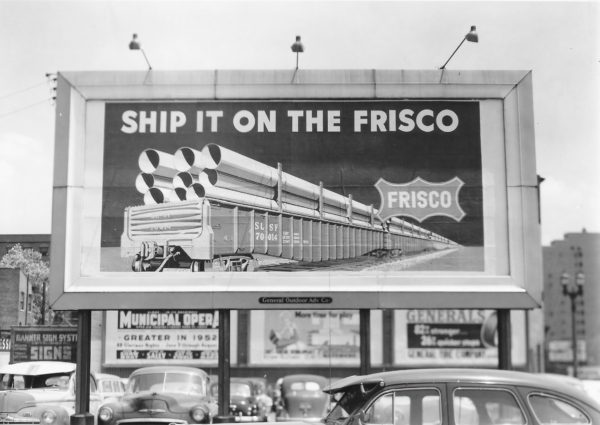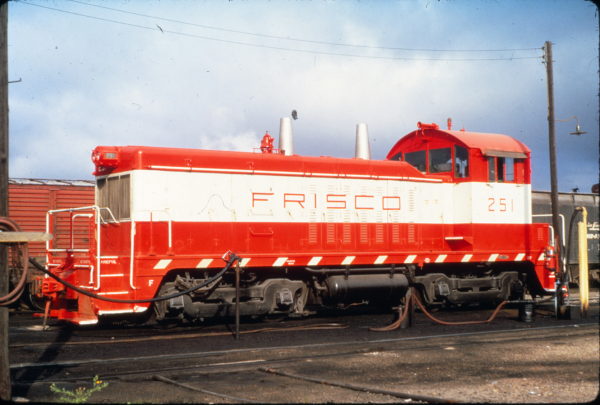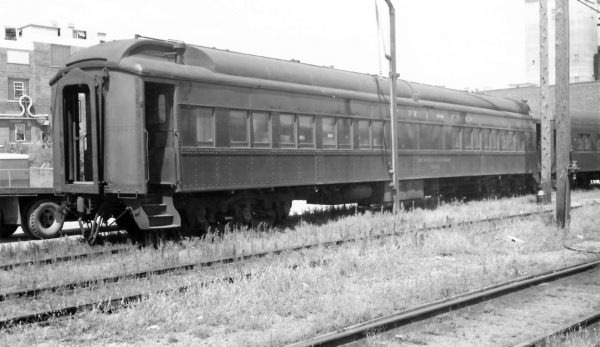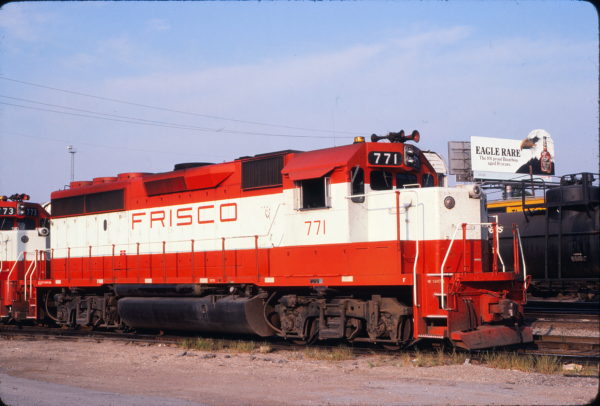
Frisco Billboard at St. Louis, Missouri in June 10, 1952 (General Outdoor Advertising Company).

NW2 251 at Amory, Mississippi in September 1982.
Location is Amory, Mississippi.
Locomotive is in the Mechanical Department’s service tracks area at Amory Yard. The mechanical area is near the center and west of the body of the yard. The former roundhouse and service tracks area are near the intersections of I Avenue and 104th Street South.
This is one of ten NW2 phase IV units (SLSF 250-259) on the roster. Standard features common to all NW2 phases include a 12 cylinder, model 567A, 1,000 HP power plant, two hood top exhaust stacks, front hood half height radiator grill with 2 side-by-side fans and front cab windows with arched tops. Distinguishing features of Phase IV units include side sill frame falsies inboard of the step wells, car body side louvers with upper letter board gap area and two stepped hood to cab transition (angled to horizontal).
The photograph date is more likely 1972, not 1982 as indicated. 1982 is inappropriate due to several issues. Historical disposition records indicate the following information.
• The locomotive was renumbered for that successor railroad on 1/9/1981.
• It was repainted black and green before 4/2/1982.
• The unit was retired on 4/29/1982.
• It was sold to the Colorado & Eastern Railroad on 6/30/1982.
Each of these dates precede the indicated date of September, 1982. Therefore, in very early 1981 the unit would have been a “patch unit”. Renumbering involved painting over the cab side original orange numbers with white paint. Then the new unit number was applied in black paint, with reporting marks below for the new owner. Number boards on the headlight castings were changed at the same time to reflect the new unit number.
Special thanks to Mark Davidson.

Buffet/Lounge Car 1601 at Springfield, Missouri on July 30, 1961 (Arthur B. Johnson).
4-8-2 1522 by air in Illinois in June 1993 (Ken McElreath).

GP40-2 771 at St. Louis, Missouri on August 31, 1980 (David Johnston).
Who’s up for another taste of Eagle Rare Bourbon?